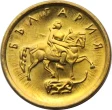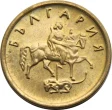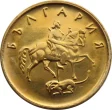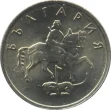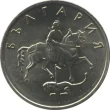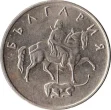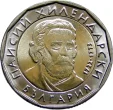Exchange your Bulgarian Leva
Do you have leftover Bulgarian Leva? We offer a fast and easy way to exchange both current and withdrawn Bulgarian Leva banknotes and coins. Convert them into your local currency today with our quick and convenient exchange service.
лв - BGN
The Bulgarian Lev has been pegged to the Euro since 1999, providing stability to Bulgaria’s economy as it prepares for Euro adoption.
Bulgarian Leva Information
The Bulgarian Lev (BGN) is the official currency of Bulgaria, a country located in Southeast Europe. The Lev has a long history, dating back to its introduction in 1881 shortly after Bulgaria gained independence from the Ottoman Empire. Over the years, the Lev has undergone several reforms and changes, with the most recent version being introduced in 1999 following a period of hyperinflation during the 1990s.
The Lev is subdivided into 100 stotinki, and the currency is issued in both coins and banknotes. Bulgarian coins are available in denominations of 1, 2, 5, 10, 20, and 50 stotinki, as well as 1 and 2 leva coins. Banknotes are issued in denominations of 5, 10, 20, 50, and 100 leva. The designs of Bulgarian banknotes feature prominent historical figures, national symbols, and landmarks that reflect Bulgaria’s rich cultural and historical heritage.
One of the key factors in the stability of the Bulgarian Lev is its peg to the Euro. Since 1999, the Lev has been pegged to the Euro at a fixed exchange rate of 1.95583 BGN to 1 EUR. This peg was introduced as part of Bulgaria’s efforts to stabilise its economy after the financial crises of the 1990s and to prepare for eventual membership in the Eurozone. The currency board arrangement, under which the Lev is fully backed by foreign currency reserves, has helped to maintain confidence in the Lev and cont…
Bulgaria’s economy has benefited from the stability provided by the pegged exchange rate, which has helped to control inflation and ensure monetary stability. The Bulgarian National Bank (BNB), which was established in 1879, is responsible for issuing the Lev and managing the country’s monetary policy. The BNB operates independently and plays a crucial role in maintaining the stability of the Lev and overseeing the country’s banking sector.
The Lev has a long and complex history. During the early 20th century, the Lev was pegged to the gold standard, which provided stability but was abandoned during the economic disruptions caused by the two World Wars. In the post-war period, Bulgaria, as part of the Eastern Bloc under Soviet influence, experienced periods of central economic planning, and the Lev was subject to government control. After the fall of communism in 1989, Bulgaria transitioned to a market economy, but the country faced significant economic challenges.
The introduction of the new Lev in 1999 was a turning point for Bulgaria’s economy. The currency reform helped to restore confidence in the financial system, and the pegged exchange rate to the Euro provided much-needed stability. Since then, Bulgaria has experienced steady economic growth, and the Lev has remained a stable and reliable currency.
Bulgaria has expressed its intention to join the Eurozone and adopt the Euro as its official currency in the coming years. The country has met many of the economic criteria required for Eurozone membership, and it is currently part of the European Exchange Rate Mechanism (ERM II), which is a step towards full Euro adoption. However, the Lev remains in use for now, and its peg to the Euro ensures that the transition will be smooth when Bulgaria eventually adopts the Euro.
In conclusion, the Bulgarian Lev has played a central role in Bulgaria’s economic history since its introduction in 1881. The currency has undergone significant changes and reforms, and its stability today is largely due to its peg to the Euro.

